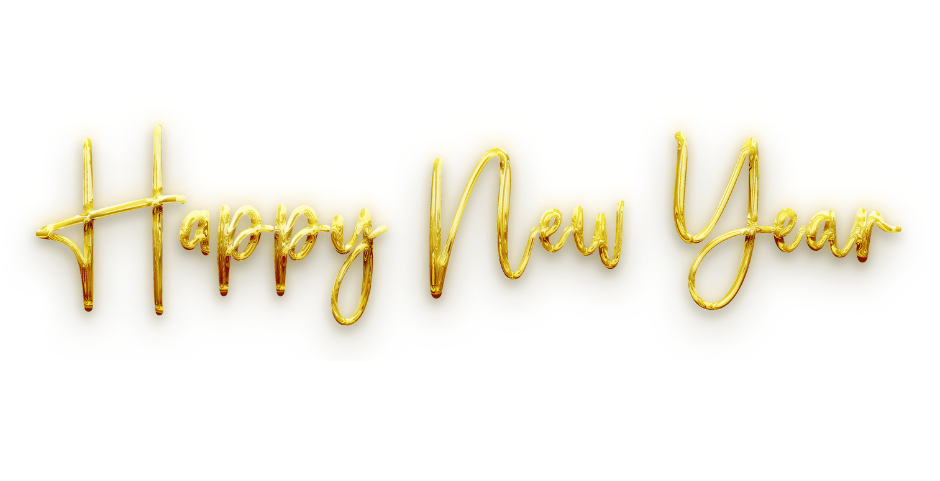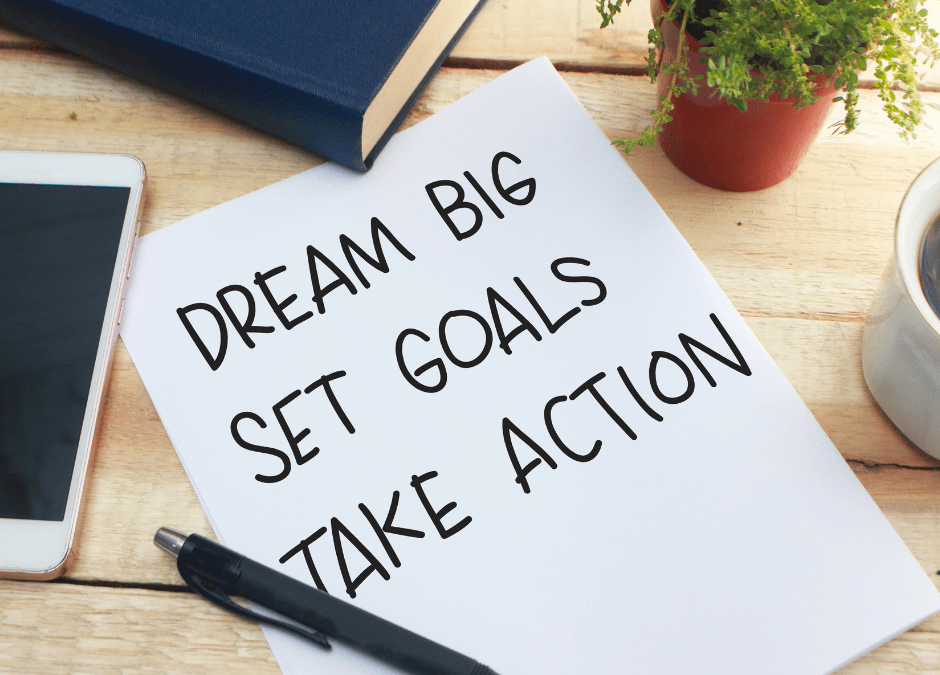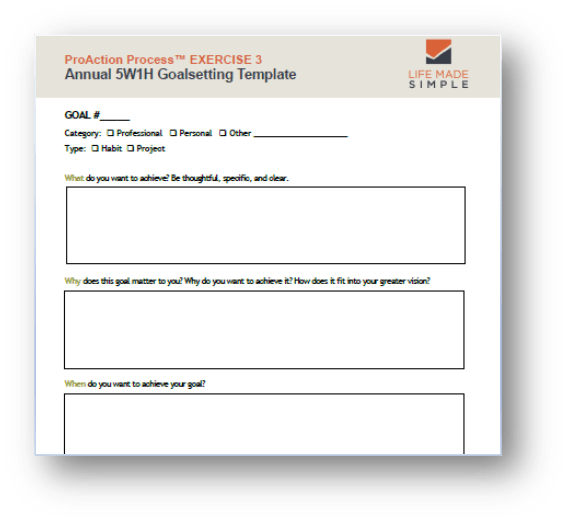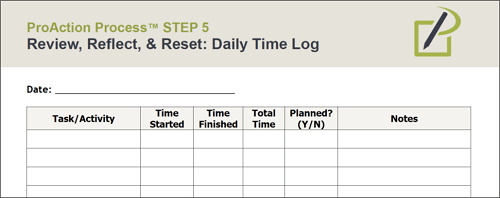
by Lori Vande Krol | Mar 14, 2025 | General Productivity, Planning, Time Management, Tools
Time tracking may not be the most exciting task but taking a step back to reflect on how we spend our precious minutes and hours can be a game-changer. When we examine our daily routines, we gain clarity on where our time truly goes, helping us live more intentionally, enhance productivity, reduce procrastination, and reach our goals. Many of my clients have had eye-opening realizations—both big and small—after committing to just a week of time tracking and asking themselves a few simple but revealing questions. Below, I share some practical tips and tools to make time reflection a seamless part of your time management routine.
How to Get Started with Time Reflection
If you’re new to time tracking and reflection, start simple by looking back regularly throughout your day. Chris Bailey, author and Productivity Consultant, suggests the following in his recent blog: “…set a chime on your phone that’ll go off every hour or two. When it goes off, reflect: What did you spend the last hour or two doing? Was it a productive use of your time, attention, and energy?”
A more advanced technique for time tracking allows you to work “as normal” and then reflect and evaluate at the end of each day. Small changes then result in continuous and lasting improvement.
Try these simple steps:
1. Track Your Time: Spend at least a week capturing everything you do throughout the day. Note the activity, time spent, and whether or not the activity was planned or unplanned. Use a journal, spreadsheet, or download the free Time Log below.
2. After reflecting on your day, answer the following questions:
- What did I learn? For example, What tasks took longer than expected? What distracted me from my priorities? What activities provided the most value?
- What can I change?
- What actions will I take?
3. Identify Patterns: Look for trends and areas where you can optimize your schedule, delegate tasks, or eliminate time-wasting activities.
Tools to Make Time Tracking Easier
There are many tools available to help you track and reflect on your time more effectively. A few of these tools include:
- Toggl – A simple yet powerful time tracker for individuals and teams looking for a simple, intuitive interface.
- Clockify – A free tool for tracking time across multiple projects and people.
- RescueTime – Unlike manual trackers, RescueTime runs in the background and provides insights on where your time goes without needing to start or stop timers.
- The simplest…pen and paper! For a template capturing all of the steps mentioned above, click below for a free download.
If you use a paper planner, you might also consider using this to not only plan your time, but track it. One ProAction Planner user shared that she uses the scheduling section of each weekly layout to track her time.
Let me know in the comments below if you use other time-tracking tools or methods that you enjoy.
Making Time Reflection a Habit
To truly benefit from time reflection, make it a regular part of your routine. Set aside 5 minutes at the end of every day and 10-15 minutes at the end of each week to review your time logs and adjust your schedule and routines accordingly. The more consistent you are, the more insights you’ll gain, leading to continuous improvements in productivity and overall well-being.
Final Thoughts
In a recent article by Digital Marketing News, “experienced remote workers,” including myself, were asked to share our favorite time-tracking tip and tool for remote work. Refer to this insightful article for additional ideas and tracking tools. There are many valuable suggestions whether you work remotely or not.
Time is one of our most valuable resources, yet we often let it slip away unnoticed. Taking a step back to analyze how we actually spend our time can reveal inefficiencies, uncover hidden priorities, and highlight areas for improvement. By making time reflection a regular habit, you can gain greater control over your daily schedule and align your actions with your long-term goals. So, take a moment to look back—you might be surprised at how it propels you forward.

by Lori Vande Krol | Jan 9, 2025 | General Productivity, Goals and Priorities, Motivation, Planning, Team Productivity, Time Management
“What if a goal is unachievable?” This question came from an audience member during a recent goal-setting workshop I presented. I suspect she was referring to a goal assigned by her “higher-ups” at work – a goal she felt was unreasonable. Many of us, at some point, have likely felt similarly about personal or professional goals. My immediate response was, “But what if it is possible? What could happen if you actually reached that goal?” Before dismissing a goal as unattainable, it’s worth taking a step back and evaluating why it feels out of reach.
1. Know why the goal is important to achieve.
Without a good understanding of why a goal is important, it’s hard to drive passion and motivation towards achieving it. Ask yourself, “What is the ultimate purpose of this goal?” Understanding the “why” can help you stay focused and committed, even when the journey gets tough. This clarity often reveals where the goal aligns with larger organizational or personal values, making it easier to prioritize and tackle.
2. Review current and needed resources to achieve the goal.
Are there resource limitations that may hinder progress toward the goal? This evaluation should include people, time, money, tools, and technology. If the goal is truly unachievable using current resources, a case should be made for including needed resources in the plan for that goal. For example, if you lack the necessary expertise, consider seeking training or outsourcing. Similarly, if time constraints are an issue, reevaluate deadlines to ensure they are realistic and manageable. You might also look for ways to automate steps or work to create other efficiencies.
3. Get everyone in the boat and rowing the same direction.
Even if all of the people impacted by a goal know and understand the “why,” you may still have team members who disagree with the goal. A rowboat reaches the finish line only if all team members are rowing together in the same direction. Think how far and fast you can go if everyone is in sync and working together. To achieve this unity, foster open communication, address concerns, and ensure everyone feels heard and valued. When team members share a sense of ownership over the goal, they are more likely to contribute wholeheartedly.
4. Break the goal into smaller milestones.
Sometimes a goal feels unachievable because it seems overwhelming. Breaking it into smaller, actionable strategies and steps can make it more manageable. Each milestone achieved provides a sense of accomplishment and builds momentum toward the larger goal.
5. Evaluate potential obstacles and solutions.
Identify the barriers that make the goal seem out of reach. Are they external, like market conditions or budget constraints, or internal, like skill gaps or low morale? Once identified, brainstorm potential solutions or workarounds. This proactive approach transforms challenges into opportunities for innovation.
6. Be open to revisiting and redefining the goal.
While it’s essential to push boundaries, some goals might need to be adjusted to reflect reality. If, after thorough evaluation, a goal remains unattainable, consider redefining it. Adjusting the scope doesn’t mean failure; it’s about being strategic and focusing on what can realistically be accomplished while still striving for excellence.
Final Thoughts
Unachievable goals can feel daunting, but they also present opportunities for growth and innovation. By understanding the “why,” assessing resources, fostering team alignment, and adopting a strategic approach, you can turn seemingly impossible goals into achievable ones. Remember, the journey toward a goal often teaches us more than the destination itself. Even if you don’t fully achieve the goal, the progress made can set the stage for future success.
For a list of goalsetting resources, check out our prior blog: Goal Setting is Hard.

by Lori Vande Krol | Dec 27, 2024 | General Productivity, Goals and Priorities, Habits, Planning, Time Management
As 2024 comes to a close, it’s the perfect time to pause and reflect on the year. Looking back allows us to appreciate our achievements, learn from challenges, and set the stage for an even better year ahead. Here are a few questions to guide your reflection and help you prepare for a successful 2025:
- What did I accomplish this year? What am I most proud of? What victories, big or small, are worth celebrating?
- What actions contributed to my success this year? Which habits or strategies will I continue to build on?
- What were my biggest challenges? Were they avoidable? What can I do to prevent similar obstacles in the future?
- What will I do differently next year? What new actions or changes will I take to move forward?
- What is one specific area I can improve in 2025?
Now, grab your favorite notebook or journal, cozy up with a warm drink, and carve out some quiet time for self-reflection. This time is a gift — a chance to acknowledge your growth and set meaningful intentions for the year ahead.
Click here for a worksheet to support your Year in Review!

by Lori Vande Krol | Oct 10, 2024 | General Productivity, Habits, Mental Health, Time Management
In the midst of our busy lives, it’s often the smallest interactions that can ground us in the present and remind us of the beauty around us. I walked into a gas station recently, lost in my thoughts. Likely, I was mentally preparing for an upcoming meeting, running the day’s schedule through my mind, or brainstorming resolutions for challenges of my clients, my children, or myself. As I was checking out, the young cashier said, “I like your ring.”
“Thank you” I responded, half-aware. But her comment took me out of my thoughts and back to the present. I looked at her, actually noticed her, and realized she had a very cute hair style with pigtails and color that I could tell took some effort. I continued, “I like your hair.”
“Thank you!” she said. Then, “A nice compliment can go a long way.”
“Yes it can” I replied. In that moment, she not only gave me a reason to smile but brought me back to the present, to be mindful of that exact moment. I left a little lighter and happier. I have been working to be more mindful, more “in the moment,” because I understand how important it is for a happier, healthier life.
Simple Mindfulness Tips
If you often find yourself lost in thought, with lack of focus, or not able to enjoy the small moments, the practice of mindfulness may help. Mindfulness encourages us to reconnect with the present, enhancing our awareness of our surroundings and ourselves. By incorporating simple techniques into our daily routines, we can develop a greater sense of peace and appreciation for the little things in life. Here are some practical tips to get you started on your mindfulness journey:
1. Brain Dump: Clear your mind by doing a brain dump of everything that is distracting you. Choose a quiet space, set a timer for 10-15 minutes and write freely. Don’t worry about grammar, structure, or coherence—just let your thoughts flow. This can include worries, to-do lists, or random ideas.
After the timer goes off, take a moment to review what you wrote. Notice any recurring themes or feelings. This reflection can help you understand what’s on your mind and identify any areas where you might need to focus your attention. Then, make a plan to address them. Creating a habit of clearing your mind with a brain dump can be a powerful way to release mental clutter and create space for mindfulness in your day.
2. Practice: Being intentional and grounded consistently takes practice. One popular grounding method is the 5-4-3-2-1 Technique: Identify 5 things you can see, 4 things you can touch, 3 things you can hear, 2 things you can smell, and 1 thing you can taste. Other methods such as spending a few minutes outdoors, movement and stretching, or mindful breathing may work for you. Techniques such as this can bring you back to the present moment, allowing you to be more focused and mindful of your thoughts and decisions.
3. Reflect: Practice regular reflection and gratitude. One way to do this is to create a daily gratitude journal. Dedicate a few minutes each day, perhaps in the morning or before bed, to reflect on your day. List three things you are grateful for. They can be big or small—anything from a successful project at work to a beautiful sunset.
For each thing you list, take a moment to reflect on why you are grateful for it. Consider how it made you feel, why it matters to you, and the impact it had on your day. This practice not only enhances mindfulness by bringing your focus to the positive aspects of your life but also encourages a deeper understanding of what truly matters to you. Over time, it can help shift your perspective and cultivate a more positive mindset.
Thank you to my cashier that day, for bringing me out of my thoughts and back to the moment I was in. I needed a reminder to stop rushing, thinking, worrying, solving, planning…to notice and enjoy what was around me. Yes, I nice compliment can go a long way.

by Lori Vande Krol | Jan 11, 2024 | General Productivity, Goals and Priorities, Habits, Time Management
Have you set your 2024 goals? If so, you are ahead of many. In fact, you are in the top 14% of business professionals! Are they written down? Even better! Do you have specific strategies and milestones for achieving them? You are on your way to success!
But if you are like most, you are struggling to create clear annual goals with specific objectives and strategies. You may be procrastinating this process due to a lack of clarity, or you just don’t know where to start. Unfortunately, this often leads to another year where you are reacting to the latest “fire” or doing whatever is in front of you instead of prioritizing and making progress toward goals and priorities that will allow you to reach your vision and dreams. Why not take a different approach to annual goalsetting this year?
5 Annual Goalsetting Questions
Creating intentional, well-thought-out annual goals does not have to be difficult. You just need some focused time to answer the following questions (note these questions work for an individual, team, or business):
1. What do you want to achieve? Be thoughtful, specific, and clear.
2. Why does this goal matter to you? Why do you want to achieve it? How does it fit into your greater vision?
Honestly answering Question #2 may cause you to determine a goal is not important, does not support your greater mission or vision, or is not a priority right now. It is ok to put that goal aside to review in a future year, or remove it for good!
3. When do you want to achieve your goal?
Choose a target end date for your goal. Or, decide which quarter(s) of the coming year you will focus on the goal. Knowing your target date will help break the goal into intermediate milestones in Question #5 below.
4. Who will be involved? Do you have full control over the outcome of the goal? Do you need someone to provide support and accountability?
Use your answers from Questions 1-4 to write your goal in 1-2 sentences. Goals that are written are three times more likely to be achieved. Once you have a clearly written goal, it is time for Question #5.
5. How will you achieve your goal? What strategies or steps will you use? What are key milestones, including dates? List these strategies and target dates to ensure you are on track throughout the year.
5W1H Annual Goalsetting
These 5 questions form the basis of 5W1H Annual Goalsetting™: What, Why, When, Who, and How. (Wondering about the fifth “W”? The fifth “W” is to help you remember to “Write” it down!)
You may be familiar with SMART Goals: those that are specific, measurable, achievable, realistic, and time-bound. The 5W1H Goalsetting questions support the thought process needed to develop SMART Goals.
Use the button below to download a 5W1H Annual Goalsetting Template which includes space for answering each question and a table for recording your strategies and milestones. Choose one goal you want to achieve in 2024 to practice the process. Once you have that completed, choose another. Before you know it, you’ll be a pro!

Annual 5W1H Goalsetting Template
FREE DOWNLOAD
Annual Goal Review and Tracking
When defining goals, it is important to distinguish between goals that are project-based and goals that are habits to create or change. How you define and track these two types of goals is very different. It is important to have a tool and process in place to regularly review and update your project-based goals as well as habit tracking tools for your habit-based goals. I will cover the review and tracking process, and potential tools, in a future blog. Stay tuned!
Help!
If you are still struggling with setting annual goals for yourself, your team, or your business, please reach out. I am here to help you clarify and reach your work and life goals.
Contact Lori at Life Made Simple or schedule your free 30-minute consultation.

by Lori Vande Krol | Nov 20, 2023 | General Productivity, Goals and Priorities, Organization, Planning, Time Management, Tools
There is no question this is a busy time of year. But as we near the end of 2023, there are still a few things you can do to close out the year and prepare for a successful 2024.
1. Spend time on office “maintenance. Schedule a few days to catch up on filing, update your contact database, organize your receipts for the year (send them to Shoeboxed and let them take care of it for you!), empty your email inbox, and/or scan in those piles of paper (I recommend the Fujitsu ScanSnap iX1600 for PC or Mac for this task.) I like to use the last week of the year for these maintenance items. Spending some time to maintain your office productivity systems will help you feel you can start the New Year fresh and accomplish your goals.
2. Fill a bag for donation. Get a trash bag (or box depending on the type of items) and take 10-15 minutes to fill it with items to donate. Drop them off at a shelter, church, Goodwill, Salvation Army, or the charitable organization of your choice before the end of the year to receive your 2023 tax deduction. Help others that may not be as blessed during the holidays and clear out your space at the same time.
3. Crush what’s left of 2023. Plan the remainder of your year to help you prioritize and be intentional about how you want to spend this busy time. Brainstorm a list of personal and work tasks you want to accomplish before yearend. Be sure to review your 2023 goals to determine what is left to accomplish and determine if and how you will do so. Once you have a list of tasks, schedule them. With about 6 weeks remaining in the year, when will you focus on each task? Check out the ProAction Planner as a helpful tool for planning and scheduling.
4. Reflect on the year. Review the good and bad from 2023. What went well? Where did you find challenges? What will you continue doing, start doing, and/or stop doing in 2024? Download and complete our Year in Review Template, using the button below, to help you through the process.
5. Create your 2024 goals. Determine three to five goals for 2024. Why are these goals important? What strategies will you use to reach your goals? What tools or resources do you need to accomplish them? Check out our past blog, Goal Setting is Hard, for more goal-setting tips.
While each of these takes some time and focus, the value received is well worth it. Be sure to schedule them in before your end-of-year calendar is full.









Recent Comments